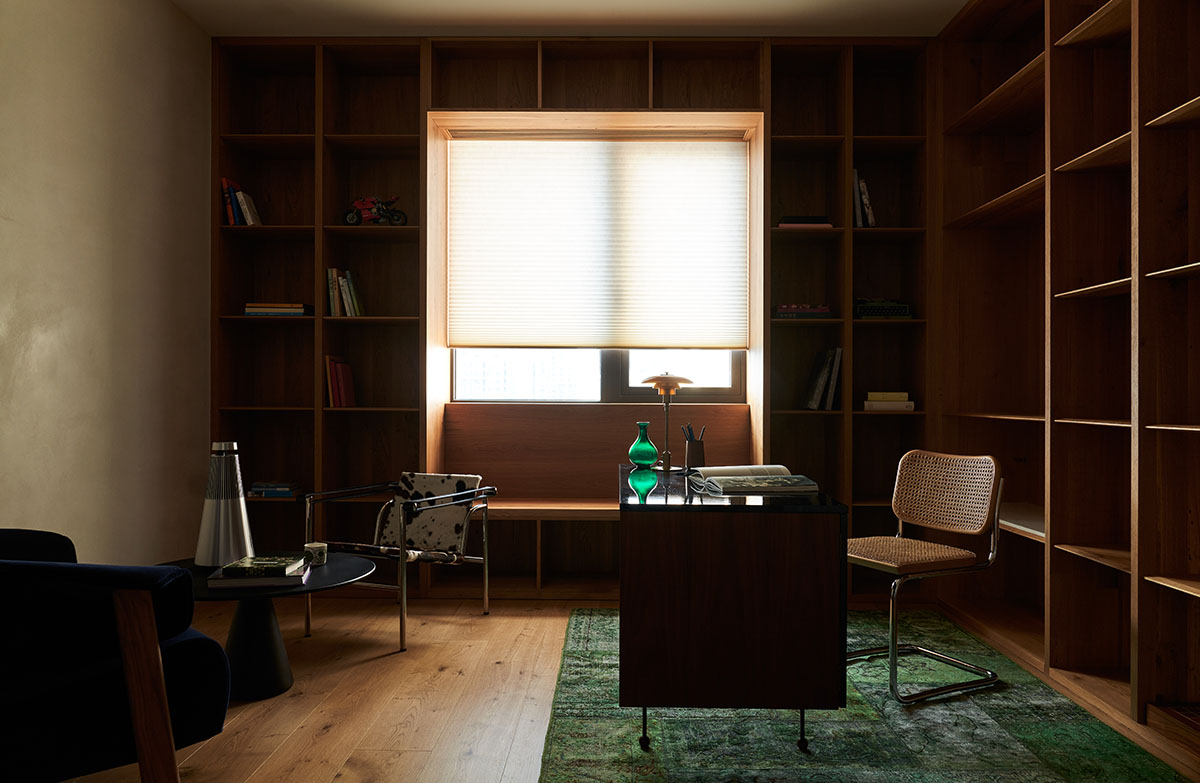The Resonance of Tea
The taste of tea, initially pure in its simplicity, reveals layers of richness upon savouring. Likely, it is this intriguing allure that has captured the homeowner's fondness for both tea and this residence. The capacious, open-layout residence initially boasts a pragmatic arrangement, yet its mechanistic, routine-laden decor lacks the essence of individuality, leading to an underutilized space and an absence of a harmonious aura. Captivated by the homeowner's passion for tea, the designer distilled the aesthetic intrigue and metamorphosed it into a design language, thereby translating it into an elegant expression resonating throughout the residence.
Photo: ZHU Hai Video: ZHU Hai Stylist: ZHU Judy


On one hand, there is an empathetic reimagining of the original layout. On the other, there is a deliberate reforging of the home's cultural tapestry. Using wood as the central motif, a milieu as smooth and inviting as a well-steeped cup of tea is crafted. Concurrently, a myriad of design elements is overlaid, allowing a profound disruption and reintegration of the spatial energy, breathing into the abode an intriguing and captivating diversity. The residence finally exudes an inviting tranquillity, a haven of comfort and ease. While it may seem modest at first glance, upon closer examination, the details prove to be thoughtfully crafted, imbued with the spirit of the homeowner. The symbolism of 'home' builds in layers, echoing the depth and warmth of a carefully steeped tea, leaving a resonance that encourages infinite contemplation.
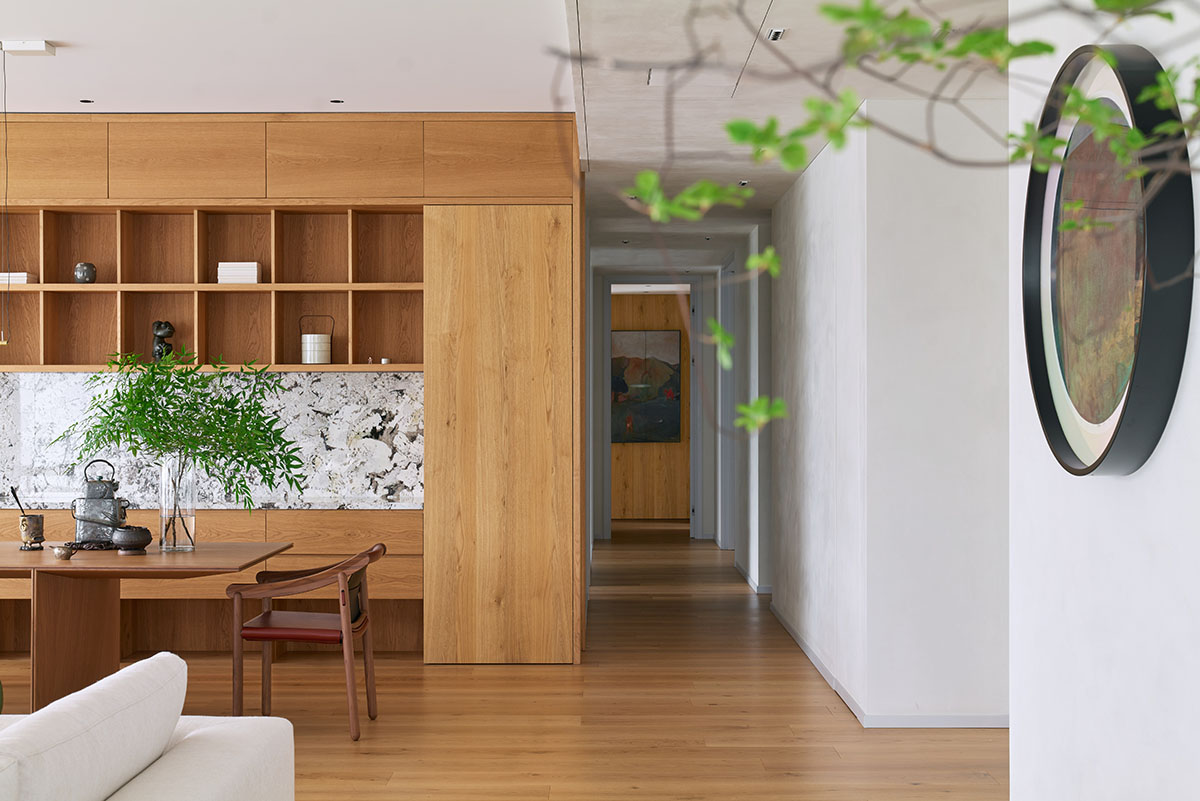
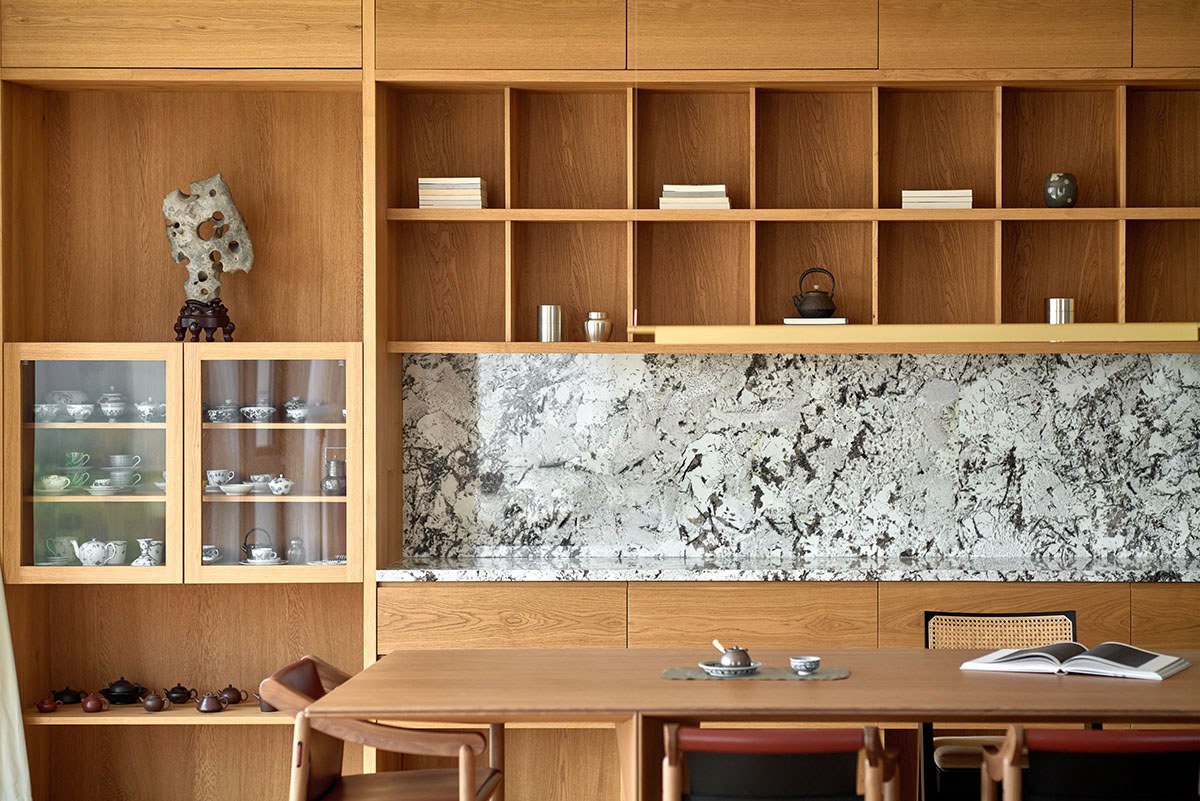

Originally, the living and dining areas, encased in a cool, impermeable sheath of grey marble, exuded an overpowering sense of luxurious hotel-like grandeur. Inspired by the inherent warmth and organic nature of tea, the designer sought affinity with the soothing, innate character of wood, selecting French oak for a thoughtful reimagining of the flooring. The hues, patterns, and texture of the wood impart a rustic simplicity and a comforting warmth to the space. As time passes, immersed in the aromatic essence of tea, the wood's grain captures and preserves the subtle imprints of life. In the living room, the designer magnified the elements relating to the ritual of tea consumption, employing traditional mortise and tenon techniques to craft a full-length cabinet. Each cubby and drawer operates as an independent module, allowing for flexible disassembly and reconfiguration, offering a display for the homeowner's cherished tea accoutrements while subtly invoking an air of Eastern culture. In front of this intricately-designed cabinet, a generously proportioned tea table presides, offering a convivial space for many to partake in the tea-infused discourse.




The designer adeptly refined and unified the initial layout of the entire apartment. The transitional space between the master suite and the bathroom was skillfully partitioned to create two individual dressing areas for the owners, enhancing the logic of the living pathways. Within the dressing rooms, mirror installations amplify the perception of the space, while the introduction of wall-mounted storage enhances the ease and convenience of apparel accessibility, providing an elegant solution to everyday practicality. Within the master bathroom, a unique marriage of East and West is expressed – a basin cabinet crafted from the distinctly oriental Blackwood, traditional Chinese stools, share the space harmoniously with Western-style basins and mirrored cabinetry. Embracing an approach of 'de-bathroomization,' the designer not only caters to practical needs, but also creates captivating visual intrigue, elevating what might traditionally be a cold, clinical space into a haven of relaxation and a platform for indulging in mindful self-care.
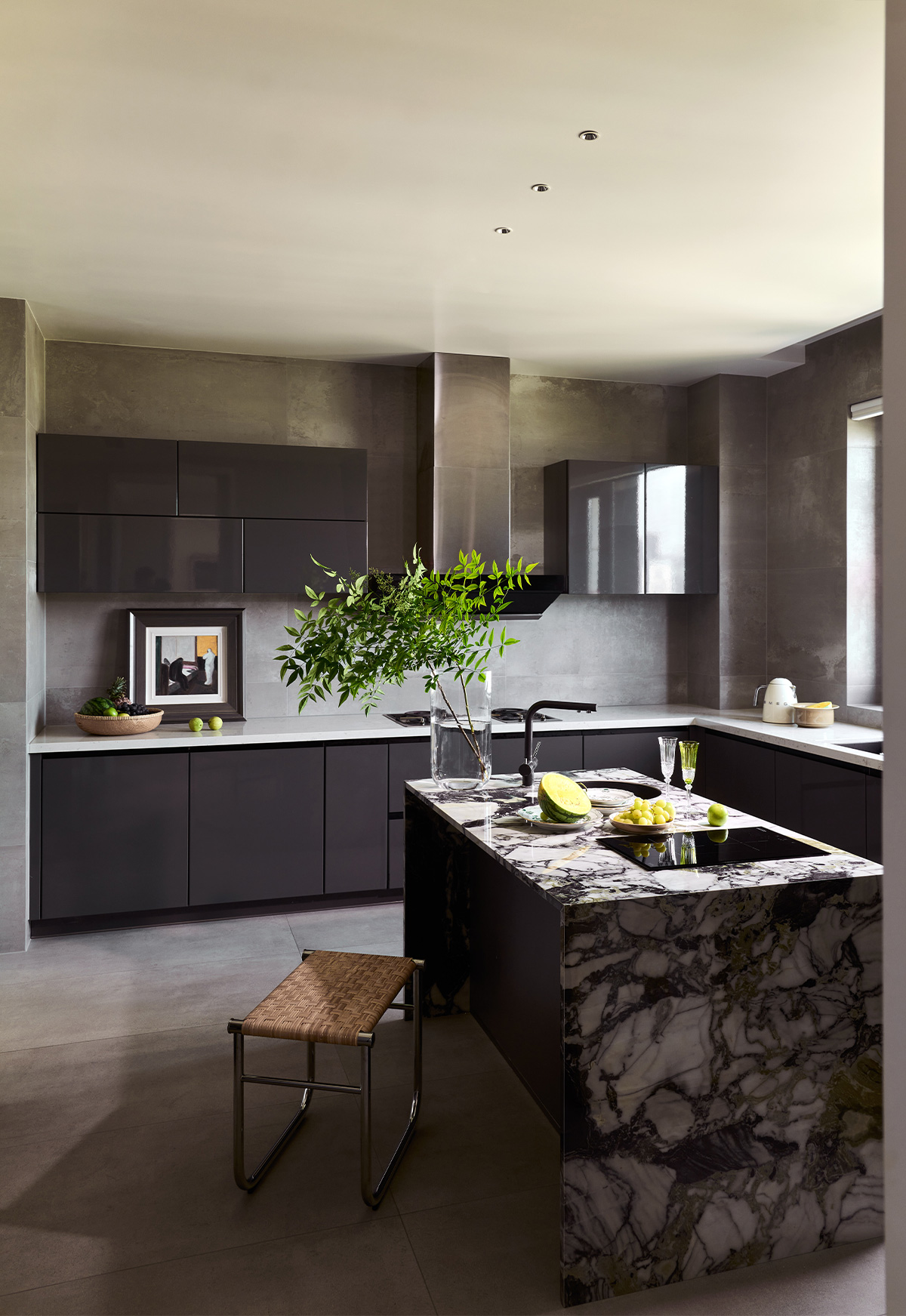

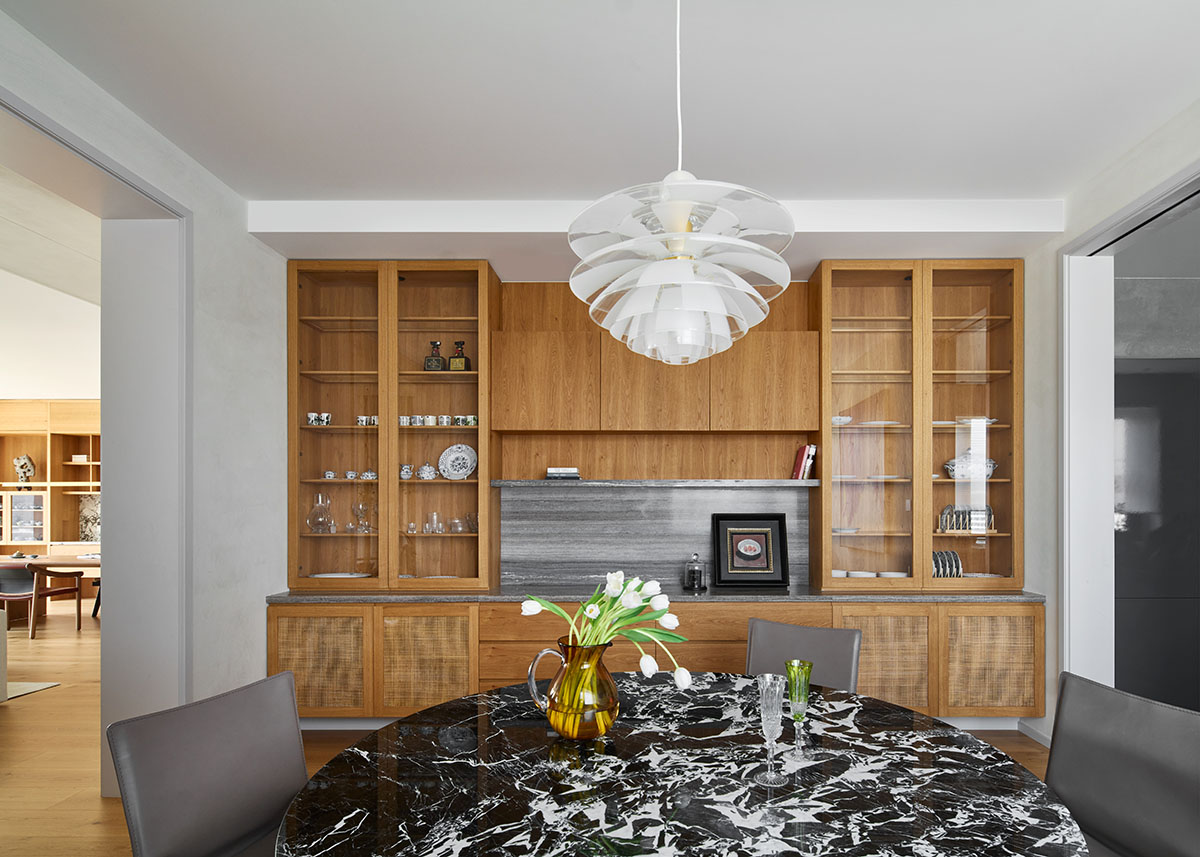
Beyond the wooden tea table and cabinet, the tangible embodiment of Eastern tea culture, sits a modern dining space, brimming with an artistic aura, adjacent to the kitchen. The design, anchored around a Western-style kitchen island, strikes a harmonious balance between tradition and modernity, fostering an intriguing dialogue between the East and West. The dining table and kitchen island, hewn from black and white veined natural marble, emulate the essence of contemporary ink wash painting, their austere elegance softening against the inviting warmth of the wood, breaking the marble's usually stoic silence. Upon meticulous observation, the round dining table is elegantly ensconced in a woven leather wrap by Bottega Veneta, a brand synonymous with restrained Italian luxury. Contrasting against the vast expanse of wood in the living room, a purple armchair by Moroso injects a youthful vitality into the minimalist space. A painting in vibrant Klein Blue, the energy epicenter, graces the dining area. Through the use of lifestyle elements, material textures, and color contrasts, the designer uses tangible furnishings to create an intangible ambiance, constructing a living space that harmoniously integrates Eastern and Western elements.
